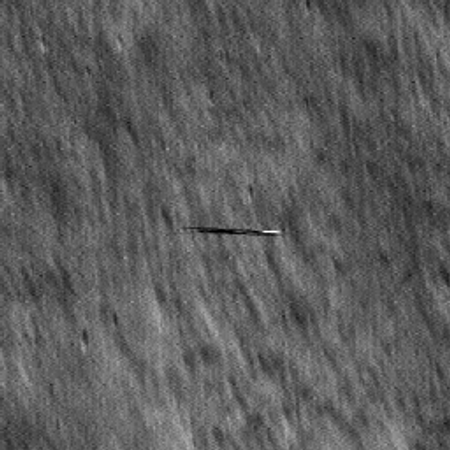Lunar Reconnaissance Orbiter snaps a smeared image of South Korea’s Danuri lunar obiter
Cool image time! On March 5 to March 6, 2024, the orbits of NASA’s Lunar Reconnaissance Orbiter (LRO) and South Korea’s Danuri orbiter had three close approaches, during which LRO had a chance to snap pictures of Danuri as it zipped by in the opposite direction.
The first image is to the right, cropped but expanded to post here.
The flight paths of the two vehicles were nearly parallel but in opposite directions, resulting in extreme relative velocity. The LROC NAC exposure time was very short, only 0.338 milliseconds. But still, Danuri was smeared by a factor greater than 10x in the downtrack direction.
…On the first opportunity, LRO was slewed 43 degrees to capture Danuri from a distance of 5.0 kilometers
Of the three pictures taken, this one appears the best. In all three cases, the fast relative speed was too fast for the camera shutter, so that Danuri’s image was smeared as you see.
Cool image time! On March 5 to March 6, 2024, the orbits of NASA’s Lunar Reconnaissance Orbiter (LRO) and South Korea’s Danuri orbiter had three close approaches, during which LRO had a chance to snap pictures of Danuri as it zipped by in the opposite direction.
The first image is to the right, cropped but expanded to post here.
The flight paths of the two vehicles were nearly parallel but in opposite directions, resulting in extreme relative velocity. The LROC NAC exposure time was very short, only 0.338 milliseconds. But still, Danuri was smeared by a factor greater than 10x in the downtrack direction.
…On the first opportunity, LRO was slewed 43 degrees to capture Danuri from a distance of 5.0 kilometers
Of the three pictures taken, this one appears the best. In all three cases, the fast relative speed was too fast for the camera shutter, so that Danuri’s image was smeared as you see.






